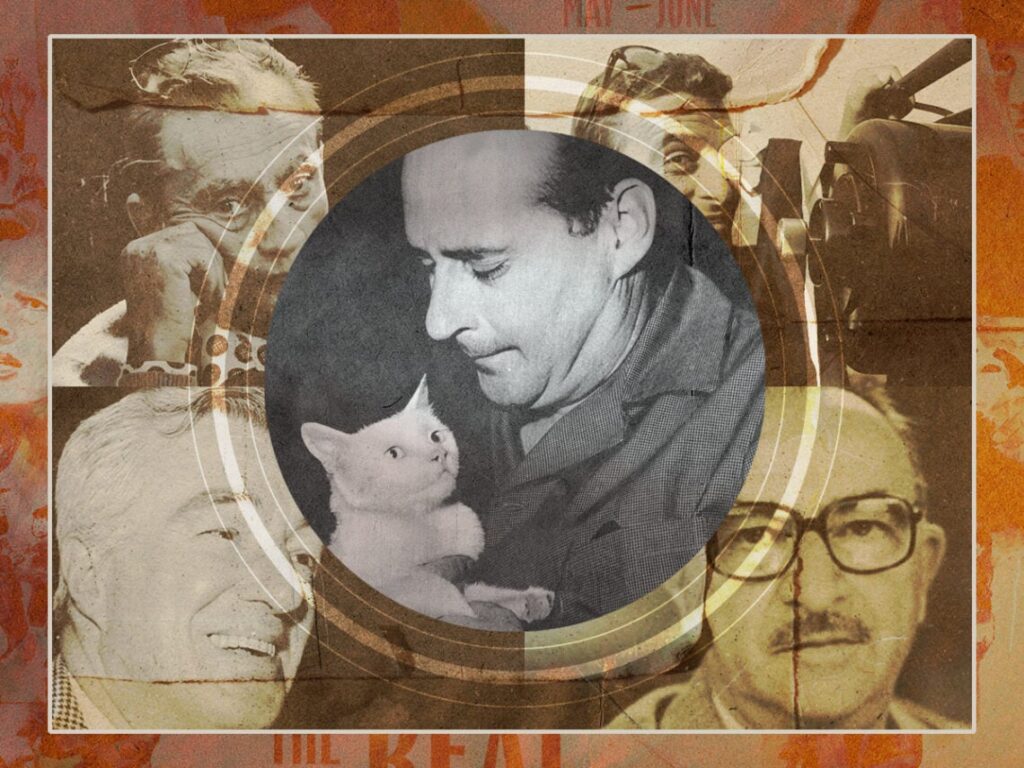The five essential filmmakers of Italian neorealism
 Posted On
Posted On
(Credits: Far Out / Stevan Kragujević / Wikimedia / MUBI / BFI)
Following the end of the Second World War, European cinema began to change vastly, and in countries like Italy, a newfound sense of artistic freedom and steadfast direction was found. The Italian neorealism movement would go on to have a significant impact, not only within the borders of the country itself but also on a broader scale on the international cinema landscape.
Defined by its commitment to providing realistic portrayals of everyday life with stories focusing on poor and poverty-stricken individuals and communities in Italy, neorealism primarily arose in response to the devastation caused by the War and by the oppressive fascist political regime of Benito Mussolini.
By shooting on location and primarily employing non-professional actors, the films of the Italian neorealist movement breathe authenticity, providing an escape from the over-produced studio works of the era and a dedication to weaving narratives just as they would occur in real life.
But who exactly are the key figures in the Italian neorealism movement? To answer that very question, we’ve compiled a list of the directors who saw it as their personal goal to push the cinematic efforts of their native Italy into new frontiers by exploring the economic, political and social conditions of the country following World War II.
The five crucial Italian neorealism directors:
Alberto Lattuada
The likes of Rossellini, De Sica and Visconti can often overshadow some lesser-known figures in the Italian neorealism movement. However, a handful of individuals still played a crucial role in its development and overall importance, one of whom is undoubtedly Alberto Lattuada, who delivered the excellent Without Pity in 1948.
Just as the other vital players of neorealism had done, Lattuada made a forthright commitment to showing the ugly realities of the poverty-stricken civilians of Italy following the Second World War, telling their overarching stories with a sense of empathic reality. Lattuada later collaborated with Federico Fellini on 1950’s Variety Lights, which, though not sticking entirely to neorealist principles, showed his unbridled dedication to exploring social issues nonetheless.
[embedded content]
Giuseppe De Santis
Of all the Italian neorealist directors, Giuseppe De Santis was the filmmaker who desired social and political reform the most. His 1949 work Bitter Rice stands as a classic in the movement and tells of the struggles of female rice workers during the post-war era in Italy, with the director committing to using non-professional actors and shooting on-location to achieve an air of reality.
Bitter Rice earned national and international acclaim, and De Santis continued cementing his status as a key figure in Italian neorealism with films such as 1952’ Rome 11:00 and 1954’s Tragic Hunt. Such works continued to examine the social implications of the political complexities of Italy in the 1940s and 1950s, and De Santis often delivered an unflinching portrayal of the harsh realities of post-war life.
[embedded content]
Luchino Visconti
Later in his career, Luchino Visconti moved into making grand and sweeping historical epics like the 1954 Senso. Still, at its beginning, he laid the blueprint for the Italian neorealism movement. Visconti’s directorial debut, Ossessione, is generally considered the very first film within the movement, and the fascist Italian government condemned it for its portrayal of the working class.
Social inequality had been imperative in Visconti’s early works, and he followed up on his debut with further films that embodied the spirit of neorealism. 1948’s La Terra Trema had initially been planned as a documentary but was turned into a fictional tale about a poor fishing family set in the Italian coastal town of Aci Trezza, showing the sheer authenticity that ran through the early segments of the director’s oeuvre.
[embedded content]
Roberto Rossellini
Without a doubt, one of the most critical contributors to Italian neorealism was Roberto Rossellini, who helped sculpt the cinematic movement’s overall aesthetic and narrative motifs. The Rome-born director’s earliest neorealist works, Rome, Open City and Paisan, delved into artistic choices that would play a key role in neorealism’s commitment to telling stories of everyday people with non-professional actors.
There’s a deep authenticity that runs through the early works of Rossellini, though his later films would stray from his neorealist beginnings. His unofficial neorealist war trilogy was completed by Germany, War Zero, which further detailed the horrifying impact of World War II while simultaneously capturing the resilience of ordinary people with his documentary-style approach to filmmaking.
[embedded content]
Vittorio De Sica
Alongside Rossellini, perhaps the other most famous director of Italian neorealism is Vittorio De Sica. Widely considered one of the best filmmakers of all time, the four-time ‘Best Director’ Academy Award winner vitally contributed to the artistic movement and helped to carve out its legacy in cinematic history. De Sica’s debut Shoeshine, released in 1946, laid down the early foundations for neorealism, which he perfected in his later works.
Many believe De Sica’s films Bicycle Thieves and Umberto D. are amongst the best movies ever made, and both continue the neorealist insistence on using non-professional actors. For example, Bicycle Thieves’ Lamberto Maggiorani was previously a factory worker. Like Rossellini, De Sica shot on location and detailed the harsh reality of life in post-war Italy while elevating the neorealism movement to new artistic and acclaimed heights.
[embedded content]


